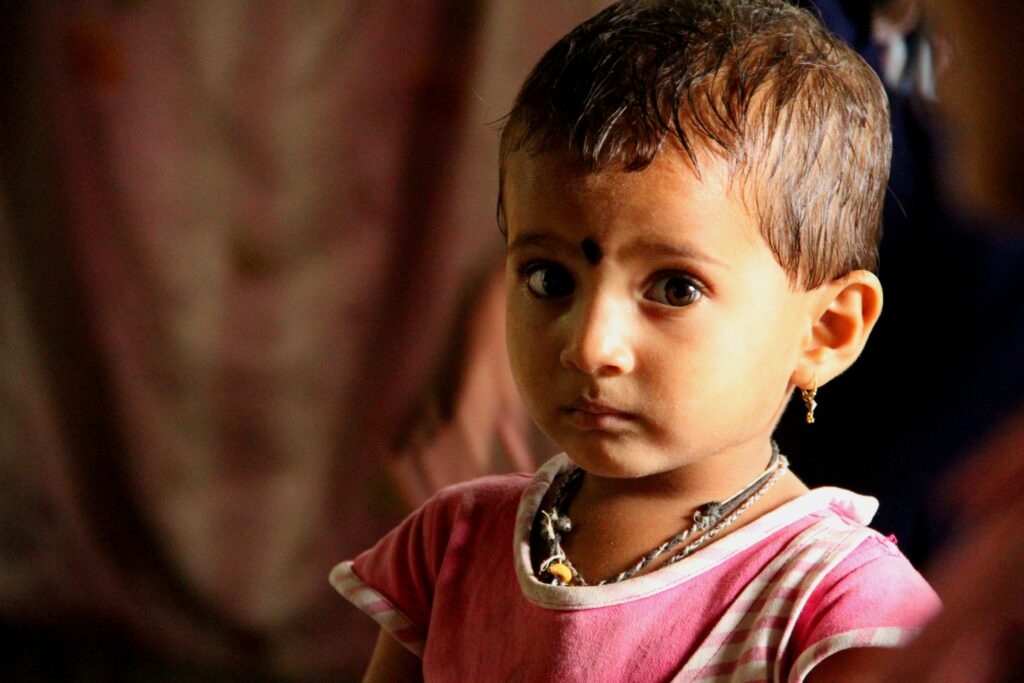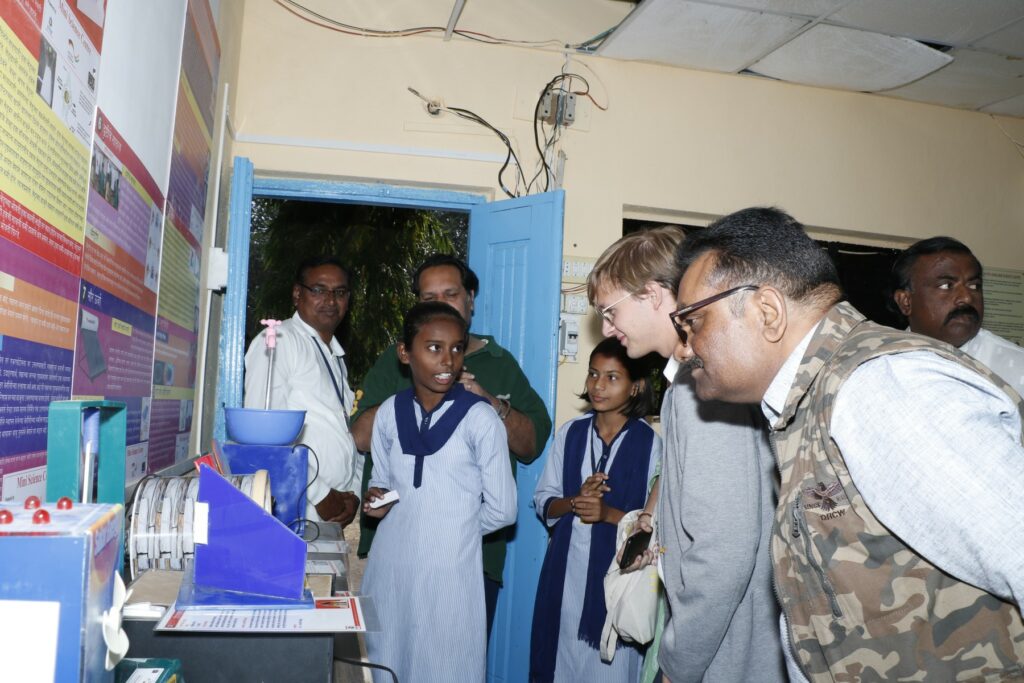
What is Female Infanticide, and Why is it Still Prevalent?
Summary/TL;DRFemale infanticide refers to the intentional killing of newborn girls, primarily resulting from cultural preferences for male childr....
Read MoreIn today’s world, science and technology are shaping the future in every field, from healthcare to transport, farming to finance. That’s why introducing STEM education for girls is not just about teaching academic subjects; it’s about building a foundation for curiosity, confidence, and career choices.
Encouraging girls to explore science, technology, engineering, and mathematics helps them discover their strengths and opens doors to exciting opportunities.
When children, regardless of their background, have equal access to learning, they’re better prepared to take part in solving real-world problems. Girls, especially from underserved communities, often face additional challenges. By supporting them through inclusive and engaging STEM programs, we can help every child dream big and build a future where everyone thrives.

The 21st century demands new skills and ways of thinking. Technology now touches nearly every job sector, making STEM skills essential for scientists or engineers and everyday decision-making. Children need a strong grasp of science and logic, whether it’s understanding climate change, using digital tools, or interpreting health information.
According to the NITI Aayog’s 2021 India Innovation Index, several states have made notable progress in promoting innovation and improving infrastructure for science and technology education. However, the country needs a skilled workforce that includes children from all regions and backgrounds to keep up with this momentum.
By introducing STEM education for girls, we ensure they are not left behind in this progress. When girls learn to code, conduct experiments, or design solutions, they build knowledge and the confidence to lead.
Also Read: Importance of STEM Education for Children
Although progress has been made, a gender gap in STEM careers exists in India. Girls remain significantly underrepresented in STEM education. Women account for just 35% of STEM graduates in India, which has seen little to no change over the past decade (Source: UNESCO, 2024). The gap often starts early due to limited exposure, societal expectations, and a lack of encouragement.
When girls are not equally represented in these fields, it means missed potential, not just for them but for the entire country. Bridging this gap starts with an education that equally welcomes and supports girls and boys.
Also Read: Importance of Inclusive Education
There are countless benefits of STEM education for girls. It promotes curiosity, strengthens problem-solving skills, and makes them think independently. STEM education teaches children valuable life lessons that contribute to future success.
STEM activities allow girls to work through challenges, test their ideas, and learn from failure without fear. This process helps build resilience and self-belief. When girls succeed in solving even small problems, it boosts their confidence to take on bigger challenges in academics and life.
Skills like coding, analytical thinking, and digital literacy are highly valued in a fast-changing world. Learning these early can help children prepare for future careers in AI, data science, clean energy, and health tech. Introducing STEM education for girls ensures they gain these skills and see themselves as capable contributors to these industries.
STEM doesn’t just teach technical knowledge. It also builds skills like teamwork, decision-making, and leadership. Girls who lead science projects or participate in coding competitions develop collaboration, communication, and problem-solving skills, valuable abilities they can apply in any career.
For many children in underserved areas, access to quality learning is limited. Schools may lack science labs, trained teachers, or internet access. However, when community-driven STEM programs are introduced, they spark interest and build skills in new and exciting ways.
Tools like science kits, computer-based learning modules, and mentorship sessions can help girls see new possibilities. Government programmes like PM eVIDYA and the National Digital Library are helping make learning more accessible in remote areas. These tools are especially useful in allowing girls to explore STEM fields and build a future in science and technology.
Across India, many girls have discovered their talents through STEM learning. In some CRY-supported projects, girls from rural villages have participated in science fairs, designed eco-friendly projects, and built simple machines. Their interest and enthusiasm often inspire others in their communities.
Disha's Journey: From Almost Child Bride to Aspiring Doctor
Disha, a young girl from a marginalised community, was on the verge of becoming a child bride. However, with the intervention of CRY and its partners, she could continue her education. Through participation in STEM programs, Disha discovered her passion for science and is now on the path to becoming a doctor, breaking societal norms and inspiring others in her community.
Kashish's Transformation: From School Dropout to Class Topper
Kashish faced numerous challenges that led her to drop out of school. With support from CRY's educational initiatives, she re-enrolled and engaged in STEM-related activities that reignited her interest in learning. Her dedication and hard work paid off as she became a class topper, showcasing the profound impact of accessible STEM education.
Despite growing awareness, barriers remain. In many communities, gender roles still influence educational choices. Girls may be expected to help with household tasks or drop out early. In some schools, a lack of female teachers in STEM subjects can limit role models. It directly impacts children's ability to learn tech skills.
Addressing these barriers requires a combined effort from families, communities, educators, and policymakers to create safe, inclusive, and supportive environments.
Also Read: Importance of Girl Child Education
CRY India partners with grassroots organisations to promote equal access to learning for all children. Through various on-ground initiatives, CRY supports the creation of child-friendly spaces where science and technology can be explored freely and joyfully.
These initiatives include establishing Mini Science Centres (MSCs), implementing activity-based learning methods, conducting capacity-building programs for educators, and organising awareness sessions with parents to emphasise the importance of education for girls.
By enabling such change, CRY India helps build environments where more girls can benefit from STEM learning and imagine themselves as future scientists, doctors, or engineers.
STEM education builds essential life and career skills like creativity, critical thinking, and problem-solving. It opens up new opportunities for girls from underserved backgrounds and helps them see a world beyond traditional roles.
They can encourage curiosity, provide access to learning tools, and introduce them to inspiring role models in science and technology. Positive reinforcement and equal participation in STEM activities go a long way in building interest.
Challenges include limited school infrastructure, societal expectations, fewer role models, and digital inequality. Girls in rural areas may also face early responsibilities that reduce their study time.
CRY India works through local partners to make learning accessible, safe, and engaging. By encouraging community involvement and improving school environments, CRY supports girls in confidently exploring STEM subjects